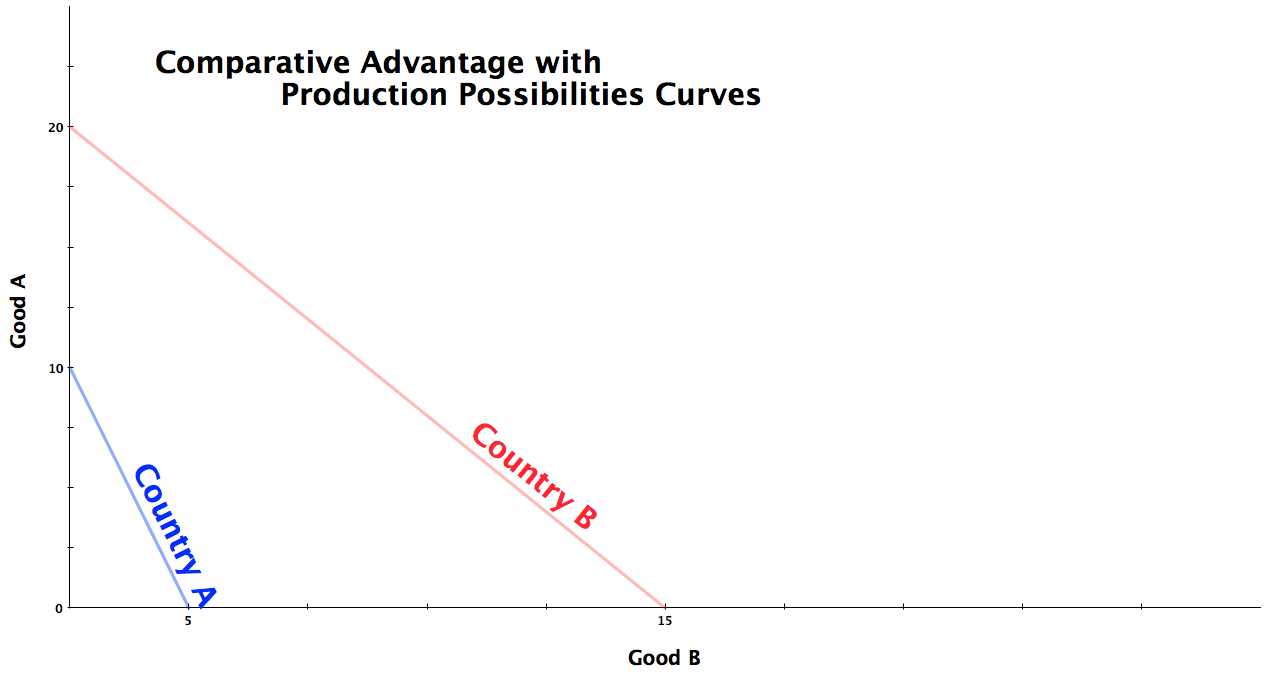Ricardo explained the advantages of international trade if one country is more productive than another country in all lines of production. If USA can produce all goods with less labour cost than India, does it still benefit the country to trade ? The answer is yes; so long as India is not equally less productive in all lines of production, it still pays both countries to trade.
USA has an absolute advantage in the production of goods A and B, because the labour cost of production for each unit of the two commodities is less in USA than in India.
In order to explain the trade between USA and India, concept of opportunity cost is used. The opportunity cost for a good A is the amount of other goods which have to be given up in order to produce one (additional) unit of A.
ADVERTISEMENTS:
A country has a comparative advantage in producing a good if the opportunity cost for producing the good is lower at home than in the other country. USA has the lower opportunity cost of the two countries in producing good A, while India has the lower opportunity cost in producing good B. Thus, USA has a comparative advantage in the production of good A and India has a comparative advantage in the production of cloth.
In order to use the concept of comparative advantage, there must be at least two countries and two goods. As long as the two countries opportunity costs for one good differ, one country has comparative advantage in the production of the other goods. As long as this is the case, both countries will gain from trade, regardless of the fact that one of the countries might have an absolute disadvantage in both lines of production.
(i) Assumptions of Comparative Cost Theory:
1. There is only one factor of production.
ADVERTISEMENTS:
2. The cost of production is payment to labour.
3. Labour is homogeneous and can be used to produce either goods A or goods B.
4. No training of labour is required.
5. No Government interference.
ADVERTISEMENTS:
6. No barrier to trade by foreign country.
7. No transport cost.
8. Production takes place under constant returns to scale.
9. Both the countries under consideration are assumed to be of equal economic strength. Hence, gain from trade is equally shared by both the countries.
10. Unlimited demand for the product at the prevailing prices.
(ii) Flaws in the theory of comparative cost:
1. Empirical evidence shows that labour cost is a small portion of the total cost. In most of the successful companies, it is only 8%. To base a theory on labour cost will provide wrong predictions.
2. This theory ignores demand. Even if opportunity cost of goods A is low in USA, its price may be higher than in India, if the demand for the product is high in USA. Such products may be exported by India even if opportunity cost of the product is lower in India.
3. This theory does not explain the reason why opportunity cost in one country producing a good is lower or higher than in the other countries.
